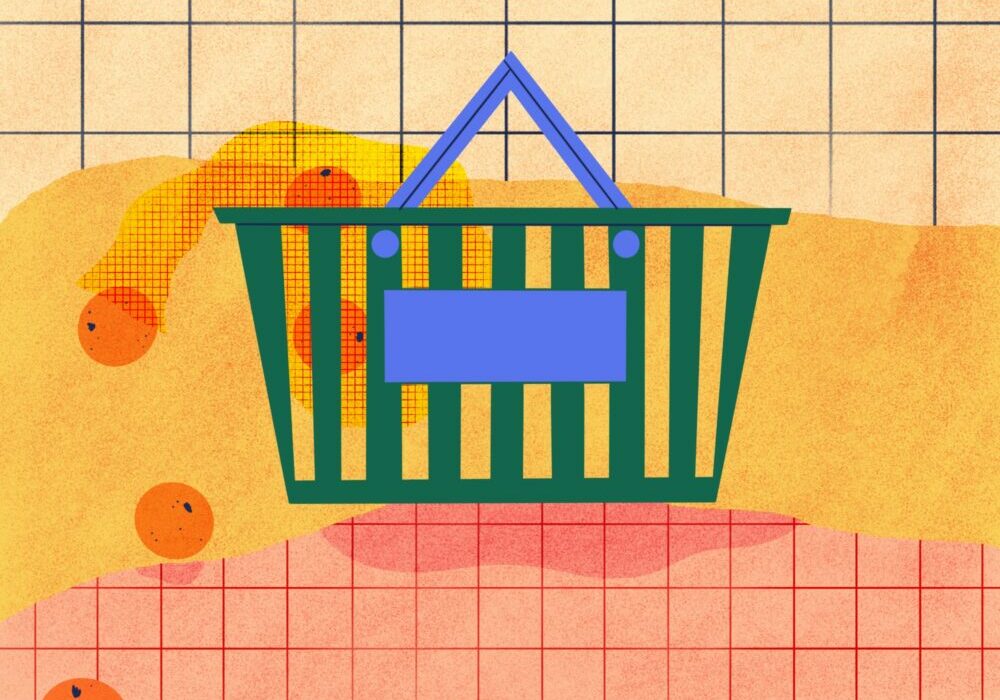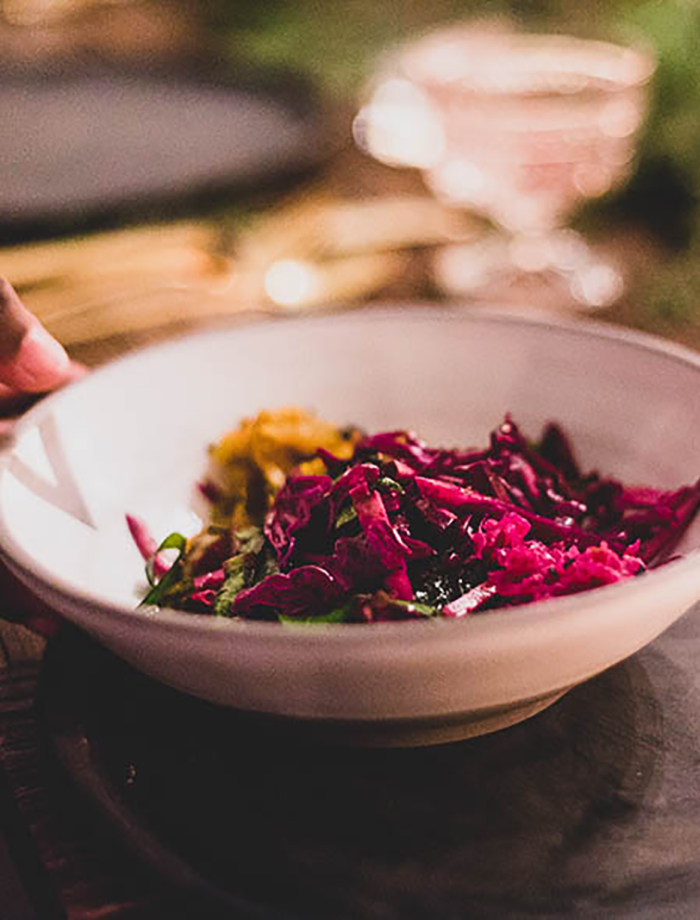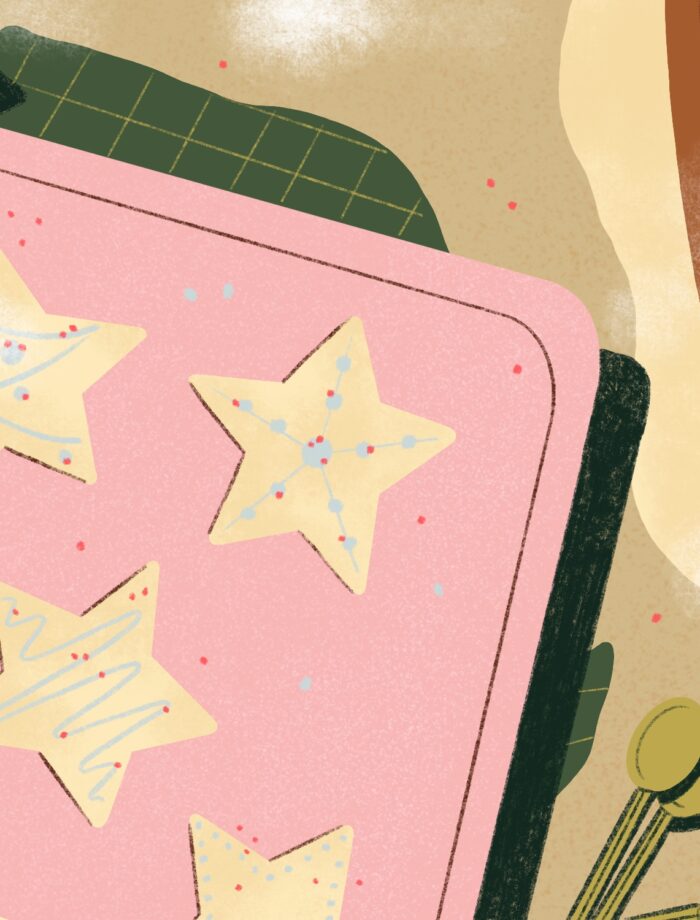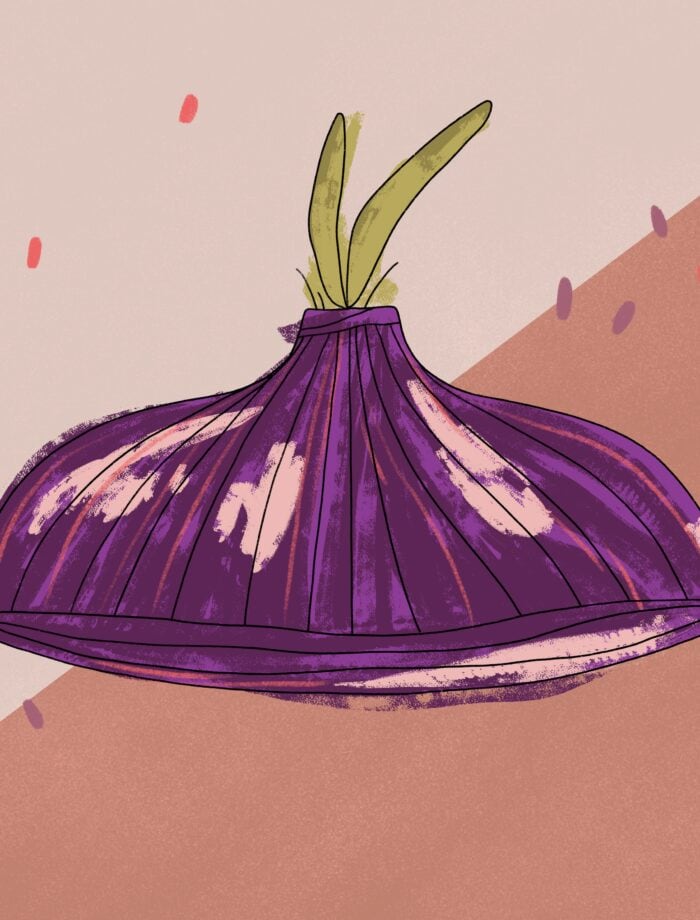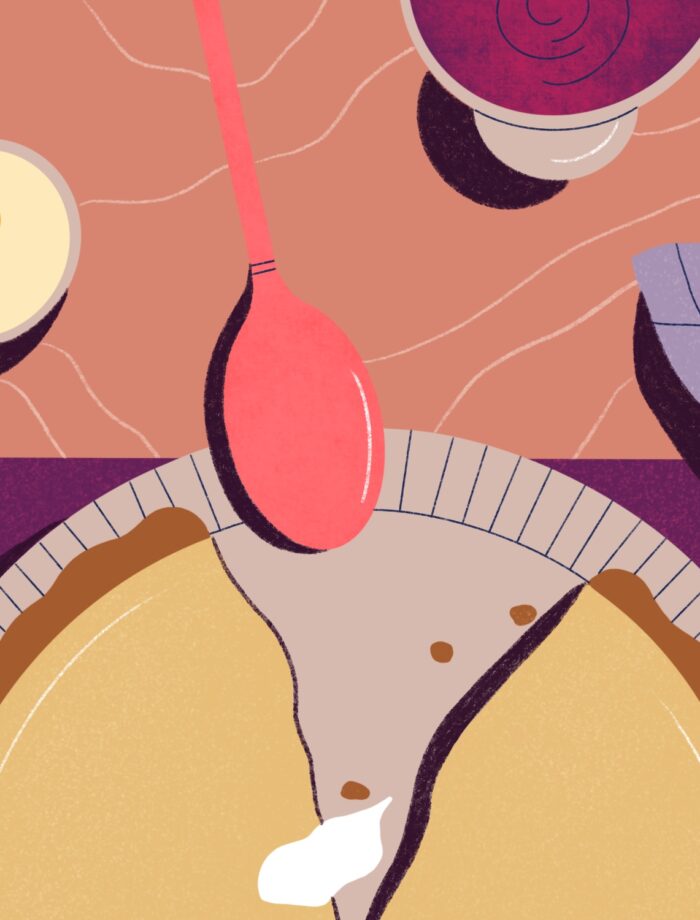Illustration by Hawnuh Lee.
Diving into the world of zero waste living has changed how I look at food. I shop for groceries differently. Instead of aimlessly wandering up and down every aisle, you’ll find me with a short list of mostly in-season produce that gets me in and out of the grocery store as quickly as possible. I cook my meals differently. I’ve expanded my taste in foods and love to experiment with new ingredients that I find at my neighborhood farmers market. I even think about food differently. Making a meal allows me to explore my creative side. Finding interesting ways to combine ingredients is such a fun challenge to me. These shifts in perspective have also started me on the journey of connecting the dots between the choices I make surrounding my food and their greater impacts on the planet.
Paying more attention to where my food comes from has helped me develop a much more intimate relationship with the world around me.
I don’t think I had ever thought twice about where my food came from until a few years ago. I’ve been privileged to always have adequate access to food. As a child, it was a weekend routine to accompany my father to the grocery store. I would help out by pushing the cart and checking items off our household grocery list. More than that, it really wasn’t until I started growing some of my own food about four years ago when I realized how many resources go into everything we eat. For example, this year, after spending a whole summer watering and weeding and pruning and checking for bugs, I was able to harvest about a dozen carrots that were each no larger than a ping pong ball. You better believe I savored every single one after the amount of work I put in. Paying more attention to where my food comes from has helped me develop a much more intimate relationship with the world around me.
Once I began to explore this topic more in-depth, I started to notice some structural problems in our food supply chain starting with all the energy embodied in every step of the journey from the farm to our dinner tables. From farming practices themselves to shipping to processing to storage, significant amounts of carbon emissions are released along the way. Based on statistics sourced from Our World in Data, food production is responsible for 25% of the world’s greenhouse gas emissions with the majority of those emissions coming from land use change and farming practices. When we transform natural habitats into farming land, we destroy all the carbon sequestration capacity embodied into that land. We need to remember that Indigenous communities have known and practiced regenerative agriculture methods that have prevented this very issue for centuries. Living in balance with the land is inherent to their way of being, so advocating for their land rights is a key component in fighting for climate change solutions. In addition to carbon emissions, the way most large-scale farms operate contribute to climate change in the forms of wasted water and excess fertilizer run-off contaminating the environment.
The types of foods we eat also matters. According to Project Drawdown, eating a plant-rich diet is actually one of the most impactful things you could do to reduce carbon emissions. Although cultural traditions should be taken into consideration, plant-rich diets are typically better for the environment. For every kilogram of beef produced, approximately 60 kilograms of carbon dioxide equivalent are released into the atmosphere. Meanwhile, most plants emit less than five kilograms for the same weight. Whether that looks like celebrating Meatless Monday or becoming vegan, embracing a plant-based diet is definitely one of the most effective paths forward.
Eating a plant-rich diet is actually one of the most impactful things you could do to reduce carbon emissions.
Then, there’s the issue of food waste. Per the US Department of Agriculture, between 30–40 percent of the food we grow is wasted. These losses happen at every level of the supply chain from harvest to consumption. When we throw our food away into the trash, it travels to a landfill where it is unable to break down in the same way it would in nature. Sending our food waste to the landfill generates methane which is a much more potent greenhouse gas than carbon dioxide. This is why composting is a better alternative. Composting allows the food to break down in a controlled way that returns nutrients back to the earth and minimizes greenhouse gas emissions. Reducing food waste at every level requires creativity, but there are also some very straightforward actions you can take in your own home. We can practice only buying what we need and playing around with creative ways to preserve foods like fermenting, freezing, drying, and pickling. We can also make sure to use as much of our produce as possible, even the bits we typically think of as inedible with recipes like this carrot top and kale dip or this vegetable stock made from food scraps.
So what does this all mean for us as consumers? We can shift our habits to reduce our environmental impact in as many ways as we can. One way to start is how I did: by reducing unnecessary packaging on my trips to the grocery store and continuing on from there. This doesn’t necessarily mean we all need to have access to a fancy zero waste grocery store to shop for food sustainably. (Although, wouldn’t that be lovely?) We can take advantage of the resources that are available to us. I’m so grateful to have a few grocery stores within walking or biking distance of my apartment, a neighborhood farmers market to visit every Sunday, and a community-supported agriculture (CSA) box that is delivered to my home every other week. It’s an absolute privilege to have so many choices when it comes to food. However, high-quality and affordable food options should not be the reality only for middle and upper-class folks.
According to the United Nations, more than one in four, or 2 billion people, were affected by moderate or severe food insecurity globally in 2018. In the United States, over 20 million people live in food desserts. Food deserts are areas where people have limited access to healthy and affordable foods. A more nuanced way to understand this issue is by understanding food apartheid. Food apartheid takes into account the whole food system and considers factors like income, race, and geography. It recognizes the social and racial inequalities that are at play in our food system and as well as the systems that make it difficult for people living in low-income communities to access fresh, healthy food. In areas experiencing food apartheid, people can’t simply rely on grocery stores to fulfill their needs. This lack of access underscores the importance of supporting efforts like the Food is Free Project, Little Free Pantries, your city’s mutual aid groups, and even your local food bank. Fighting for food justice is both an act of self-care and community care. It’s about taking care of your most basic needs and enduring everyone in your community, however you choose to define that term, can do the same.
High-quality and affordable food options should not be the reality only for middle and upper-class folks.
We all deserve healthy and affordable food. We can make this a reality by making sure our food consumption habits don’t negatively impact the planet and ensuring access for all. On an individual level, we can reduce our climate impacts by eating a plant-based diet, supporting local and sustainable farms, reducing unnecessary packaging, and not wasting food. If you’re just starting out on your journey of making sustainable lifestyle habit changes, remember the system we’re working within is imperfect. Wherever you are in your process is wonderful. To multiply our impact, we can take action to change the systems through policy that ensures we are returning to traditionally Indigenous farming practices that balance the needs of the land with our need for nourishment. In tandem, policy needs to be developed that supports universal access to food following in the path of Civil Rights organizers who demanded food justice and won national policies like the Food Stamp Act of 1964. By taking any or all of these actions, we can move another step closer to ensuring we all have access to food that is both good for us and good for the earth.
